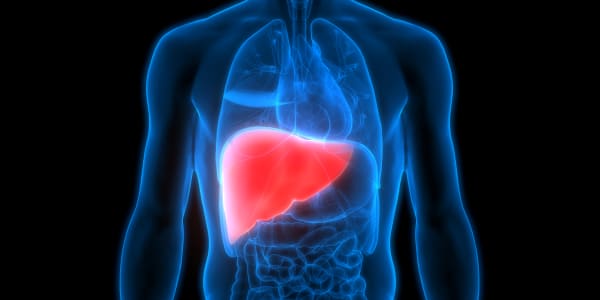On Monday the World Health Organization released its 2017 Global Tuberculosis Report, and the latest picture is still one of extreme gravity, as progress to stop the spread of this disease simply isn't fast enough to make major headway: In 2016, 10.4 million people fell sick with TB, and about 1.7 million people — including 400,000 with concomitant HIV — succumbed to the deadly infection.
According to WHO, TB is the ninth-leading cause of death worldwide and continues to be the world's No. 1 infectious killer, surpassing HIV/AIDS.
"There are seven countries that are responsible for the majority of the cases of tuberculosis," says Dr. Mario Raviglione, director of the Global TB Programme at the World Health Organization. "They are India, Indonesia, China, the Philippines, Pakistan, Nigeria and South Africa. These seven countries are responsible for 64 percent of the world burden. Nearly two-thirds of the cases."
This year's report explores the burden of TB, the challenges that remain and the political commitment required to drive change, says Dr. Raviglione.
Although globally the TB mortality rate is falling at about 3 percent per year and incidence is decreasing by 2 percent per year, says Dr. Raviglione, by 2020 these figures need to improve to about 5 percent and 10 percent, respectively, in order to begin seeing some concrete results toward ending this global epidemic.
"There is this slow decline that continues, there is this huge amount of burden, and the missing part is the acceleration. We see no acceleration of the efforts against tuberculosis, and this is probably the main message emerging out of this year's report," says Dr. Raviglione. "It requires political commitment. Ministers of health and prime ministers at this point in time are now really in a situation where either they react or it will go on like this."
To reach these goals, WHO is promoting the End TB Strategy, calling for intensified action across government ministries, communities, the private sector and civil society. Progress will depend on additional resources from domestic sources (middle-income countries) and international donors (especially low-income countries), as well as investment in research and development.
The critical step to ending TB
"Tuberculosis has to be phased out from a multisectoral approach," says Dr. Raviglione, and the critical step, he says, is to elevate the discussion with global leaders.
In November global leaders, NGOs and members of academia and the corporate sector will be gathering in Moscow at the first-ever WHO Global Ministerial Conference to end tuberculosis. Russian President Vladimir Putin will open the meeting.
Its aim: to accelerate country implementation of the End TB strategy, which calls for reducing TB deaths by 35 percent and incidence by 20 percent compared to 2015 levels by 2020, and to curtail the catastrophic costs patients and their families face as a result of the disease. By 2030 the strategy aims to reduce deaths by 90 percent and incidence by 80 percent. So far, 97 countries have confirmed their participation. A Ministerial Declaration will be signed at the conference, containing bold commitments by countries to accelerate an action to end TB and meet the milestones toward the 2030 UN sustainable development goals.
We see no acceleration of the efforts against tuberculosis, and this is probably the main message emerging out of this year's report. It requires political commitment. Ministers of health and prime ministers at this point in time are now really in a situation where either they react or it will go on like this.Dr. Mario Raviglionedirector of the Global TB Programme at the World Health Organization
"This is a major meeting we have been organizing with the government of Russia," says Dr. Raviglione. "Russia came to us a couple of years ago and said they need to do something about tuberculosis because they have a major problem with multidrug-resistant TB. They recognized the problem and they offered to hold [the meeting]. As of today, we have ministers of health and delegations representing nearly 100 countries."
How the crisis began — and the newest drugs to tackle it
So how did an illness that is completely preventable — and treatable — become the world's most infectious killer? After all, health officials that coined it "the white plague" predicted it would be eradicated by 1915.
Most deaths from TB can be prevented with early diagnosis and appropriate treatment, says Dr. Raviglione.
While 53 million deaths were averted from 2000 to 2016 due to proper detection and treatment, there are still huge gaps, he says, adding that most people eligible for TB preventive treatment simply aren't accessing it, and drug-resistant TB is a continuing threat.
Although cases of drug-resistant TB are low in the United States, worldwide there were about 600,000 new cases estimated to have emerged in 2016 that were resistant to rifampcin, the most effective first-line drug. Of these cases, 490,000 had multidrug-resistant TB, or MDR-TB, according to the WHO report. Nearly half of all cases occurred in India, China and the Russian Federation.
In general, tuberculosis is spread through human-to-human contact and through the air when someone who is infected coughs or sneezes. MDR-TB is caused by an organism that is resistant to at least isoniazid and rifampin, the two most potent TB drugs. This occurs when these drugs are misused or mismanaged, such as when patients are put in a situation that is not conducive to full completion of their full course of treatment; when health-care providers prescribe the wrong treatment; or when the supply of drugs is not available or is of poor quality.
The development of new drugs requires substantial investment and research, the main reason no new drugs have been developed specifically to treat TB since the introduction of rifampicin in the late 1960s. One exception is bedaquiline, sold under the brand name Sirturo. In 2012 Johnson & Johnson-owned Janssen Therapeutics' got fast-track FDA conditional approval for this drug for use in adults with MDR-TB. Bedaquiline was the first new TB drug in 40 years to be approved by the FDA or any other agency. Promising results of an early bedaquiline trial were first reported in 2004, after the drug had been in development for seven years.
Another company committed to developing a vaccine and finding a cure is Japan's Otsuka Pharmaceutical. For more than a decade Otsuka Pharmaceutical funded $470 million in private research to develop a drug to treat MDR-TB. In 2002 Otsuka's MDR-TB compound, delamanid, was discovered, and phase I testing of it began in 2004. Delamanid fights TB using a novel mechanism that blocks the bacteria from synthesizing acids needed to build cell walls. It received its first regulatory approval in Japan in 2014.
Delamanid does not yet have FDA approval in the United States but was authorized by European authorities in 2014. In August, however, Otsuka entered into an exclusive licensing agreement with U.S. pharmaceutical firm Mylan's U.K. subsidiary to distribute delamanid, sold as Deltyba, in India and South Africa.
More from Modern Medicine:
One third of Americans are headed for diabetes and don't know it
Internet addiction is sweeping America, affecting millions
Doctors on cusp of launching male contraceptive but need to seduce Big Pharma
"Otsuka is one of the few companies that has put a lot of time and effort consistently over a long period of time [into TB development]," said associate professor Justin Denholm, medical director of the Victorian Tuberculosis Program in Melbourne, Australia. Mylan plans to extend the roll-out to additional countries in the future.
The company's work has attracted the Bill & Melinda Gates Foundation, which gave an initial planning grant to Otsuka for $350,000 to develop two integrated product development plans to evaluate potential research efforts, a Gates Foundation spokesperson told CNBC. The foundation is now in talks with Otsuka regarding some additional funding to move forward.
A six-month course of delamanid costs $30,000 in Europe, while courses purchased through the the Global Drug Facility, run by the Geneva-based Stop TB Partnership (Stop TB), are procured by the fund for $1,700.
Mick Frick, Treatment Action Group senior project officer for TB/HIV, worries that initial conversations with the Central TB Division in India suggest the Otsuka/Mylan roll-out of delamanid will face the same problems that prevented access to bedaquiline in the country, including geographic restrictions on receiving the drug. Frick also said that pricing will be the biggest question concerning availability of the drug in India.
Treatment for MDR-TB is a vicious cycle of daily injections and pills, which can come with major side effects. Courses are said to last six months, but in reality most run two years, sometimes four.
— By Julian Littler, special to CNBC.com. Additional reporting by Barbara Booth, Special Reports editor at CNBC




